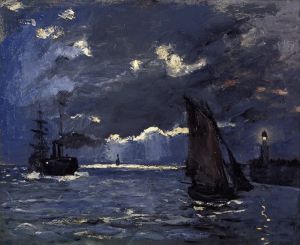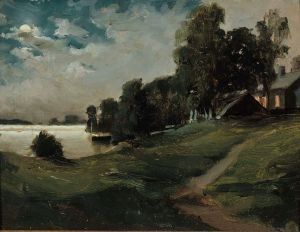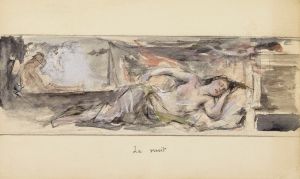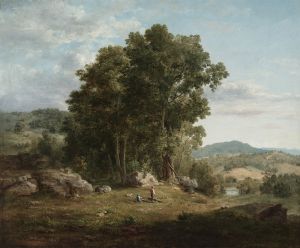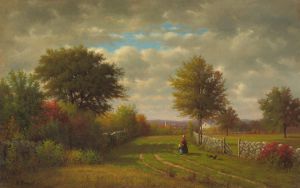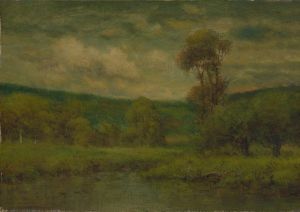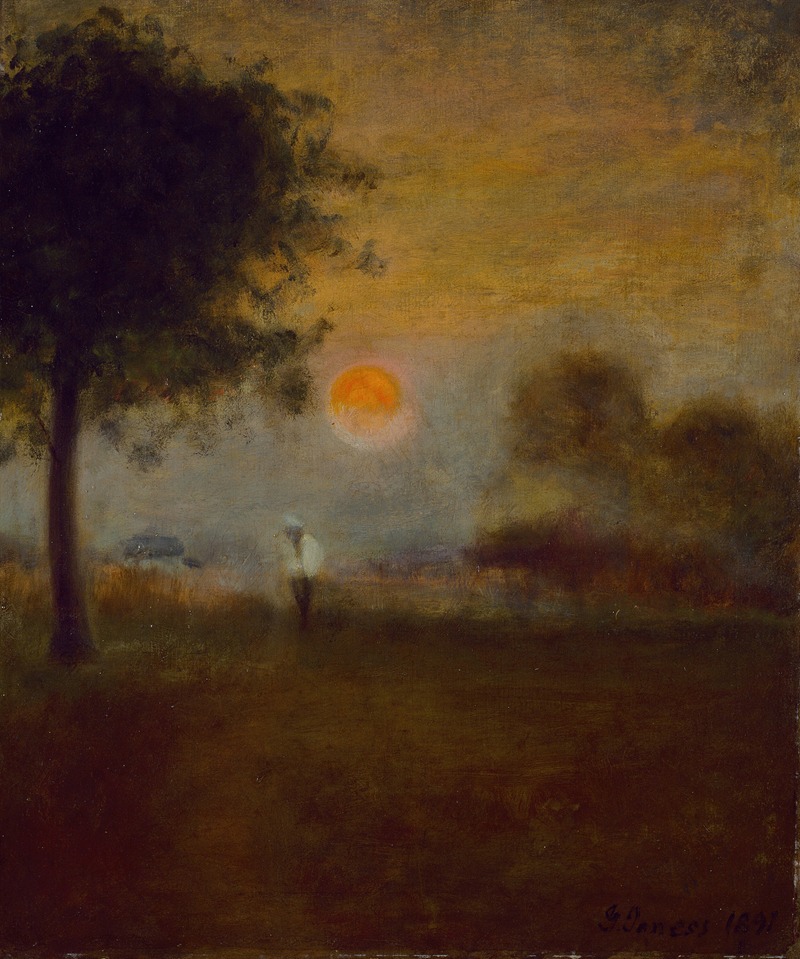
Moonrise
A hand-painted replica of George Inness’s masterpiece Moonrise, meticulously crafted by professional artists to capture the true essence of the original. Each piece is created with museum-quality canvas and rare mineral pigments, carefully painted by experienced artists with delicate brushstrokes and rich, layered colors to perfectly recreate the texture of the original artwork. Unlike machine-printed reproductions, this hand-painted version brings the painting to life, infused with the artist’s emotions and skill in every stroke. Whether for personal collection or home decoration, it instantly elevates the artistic atmosphere of any space.
George Inness was an influential American landscape painter, born on May 1, 1825, in Newburgh, New York. He is often associated with the Hudson River School, although his style evolved significantly over his career, incorporating elements of the Barbizon School and later, a more personal, spiritual approach to landscape painting. One of his notable works is "Moonrise," which exemplifies his mature style.
"Moonrise" by George Inness is a painting that captures the serene and mystical qualities of the natural world, a hallmark of Inness's later work. Created in 1887, this painting reflects Inness's interest in the spiritual and transcendental aspects of nature, influenced by his study of Swedenborgianism, a spiritual philosophy that emphasizes the presence of the divine in the natural world. This philosophical approach is evident in "Moonrise," where Inness uses the landscape to evoke a sense of peace and introspection.
The painting depicts a tranquil scene at dusk, with the moon rising over a softly lit landscape. Inness employs a muted color palette, using soft blues, greens, and earth tones to create a harmonious and calming atmosphere. The composition is balanced, with the moon positioned slightly off-center, drawing the viewer's eye into the depth of the scene. The trees and foliage are rendered with loose, expressive brushstrokes, a technique that Inness developed in his later years to convey the ephemeral and ever-changing qualities of nature.
Inness's approach to "Moonrise" reflects his departure from the detailed realism of his earlier works. Instead, he focuses on capturing the mood and essence of the landscape, using light and color to evoke emotion rather than to depict a specific location with photographic accuracy. This shift in style aligns with the broader movement in American art during the late 19th century, where artists began to explore more subjective and expressive forms of representation.
"Moonrise" is also notable for its atmospheric effects, which Inness achieved through his mastery of tonal variation and his understanding of light. The painting's luminous quality is achieved through the careful layering of paint, allowing the underlying colors to subtly influence the surface tones. This technique creates a sense of depth and luminosity, enhancing the painting's spiritual and contemplative qualities.
Throughout his career, George Inness was celebrated for his ability to convey the spiritual dimensions of the natural world. "Moonrise" is a testament to his mature style, where he successfully blends his technical skill with his philosophical beliefs. The painting remains an important example of Inness's contribution to American landscape painting and his influence on subsequent generations of artists.
Today, "Moonrise" is appreciated not only for its aesthetic qualities but also for its representation of Inness's unique vision. It continues to be studied and admired by art historians and enthusiasts who recognize its significance in the context of 19th-century American art. The painting is housed in various collections, where it continues to inspire and captivate viewers with its serene beauty and profound sense of tranquility.






